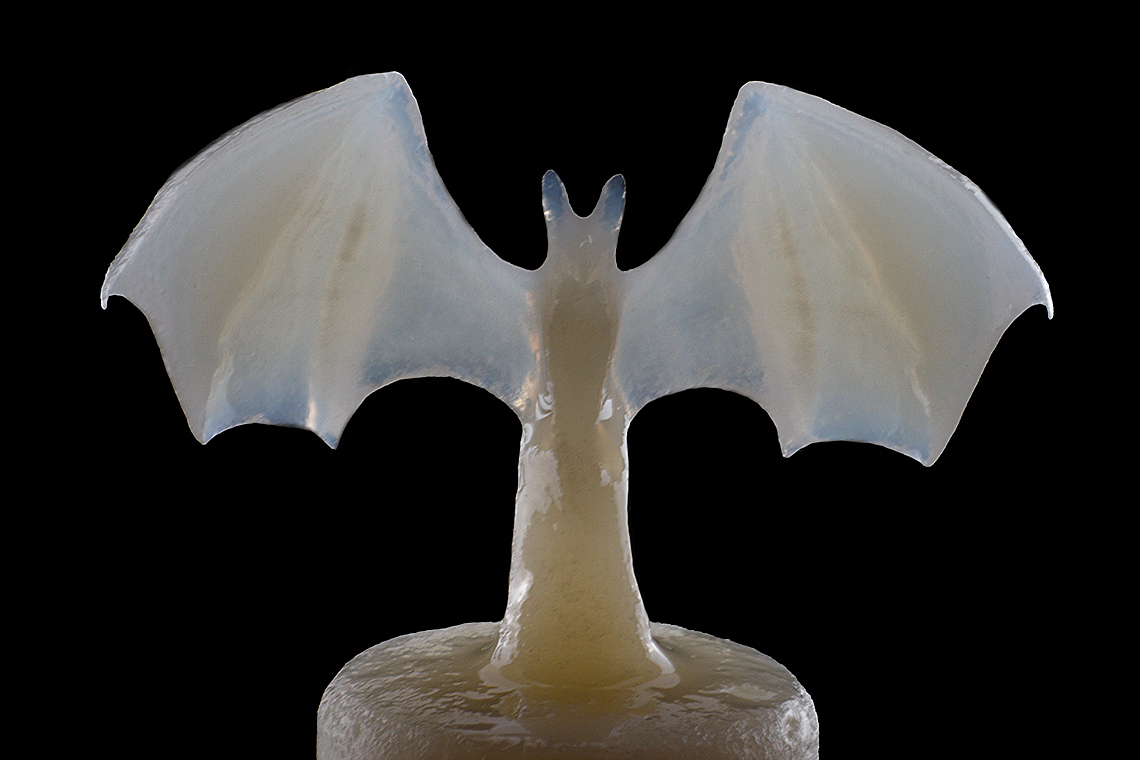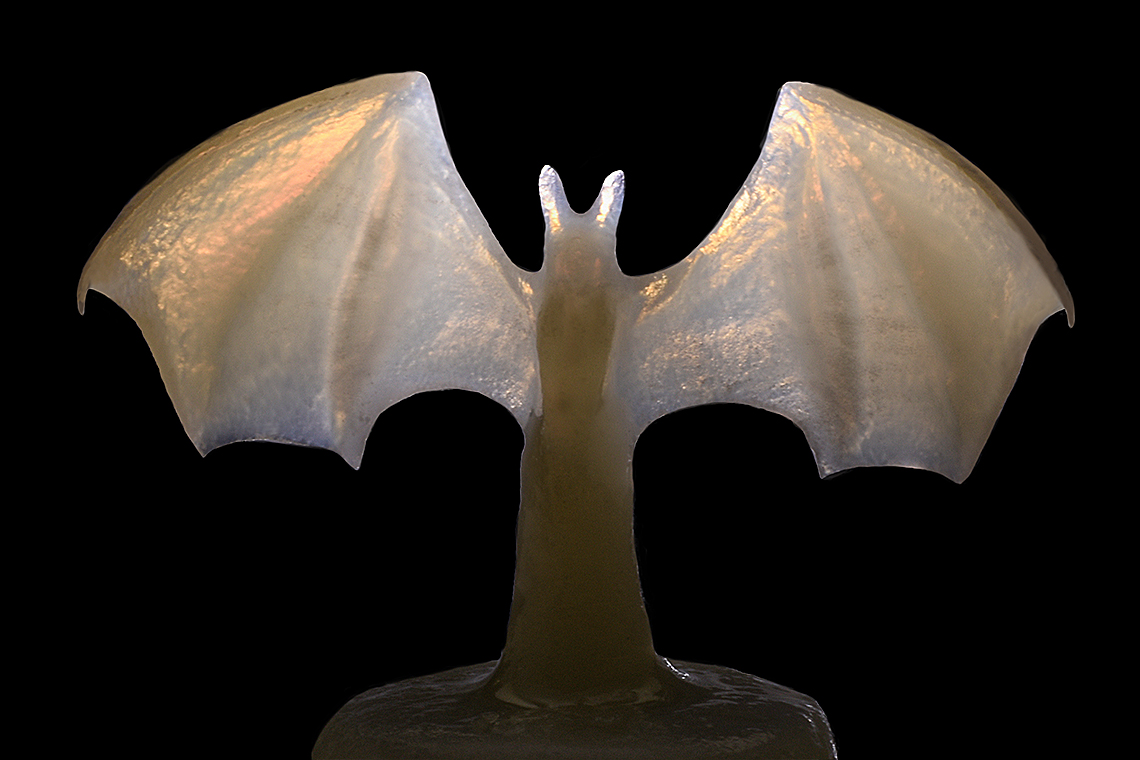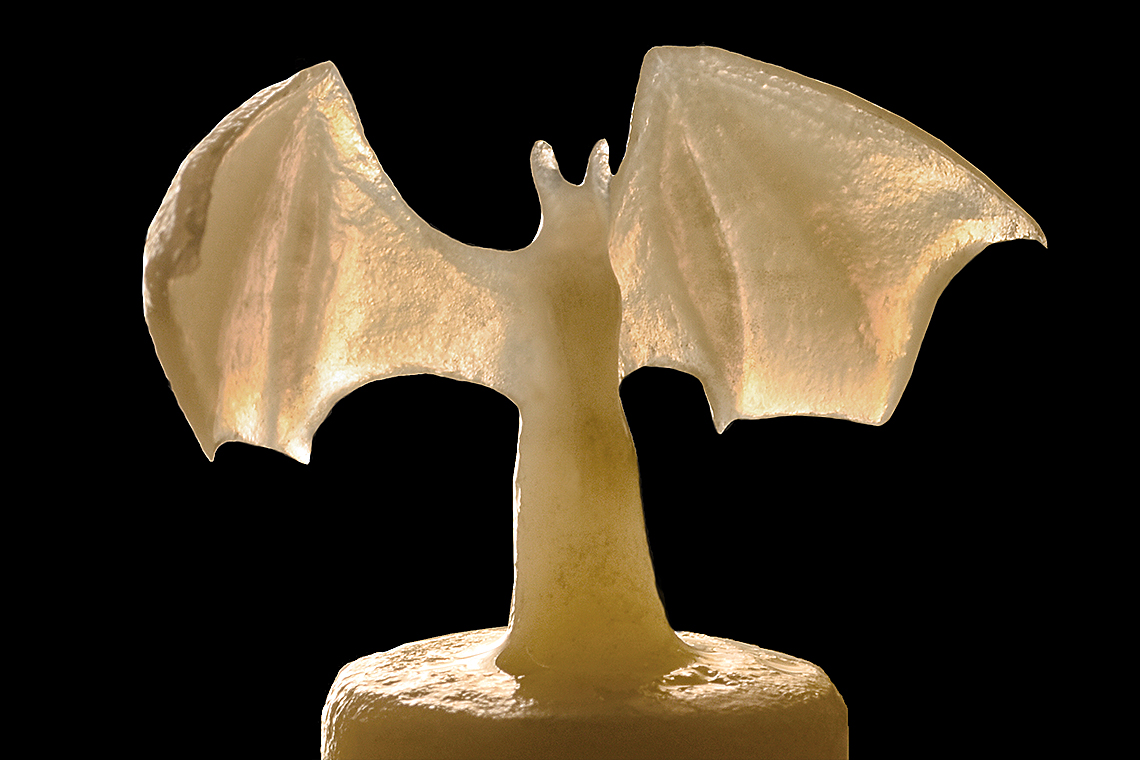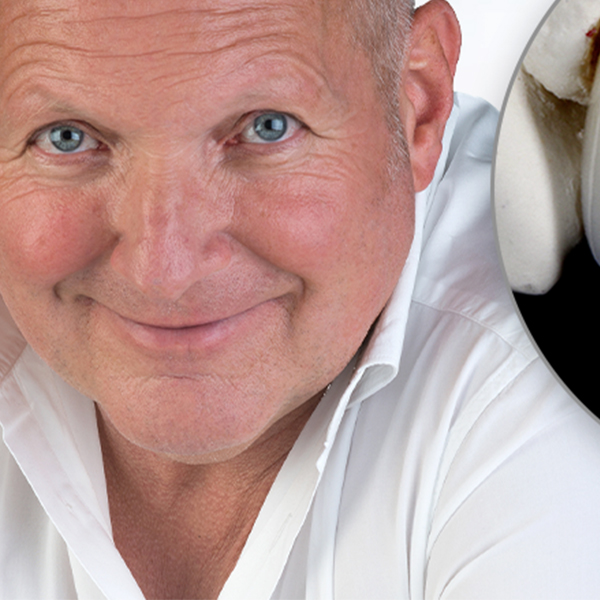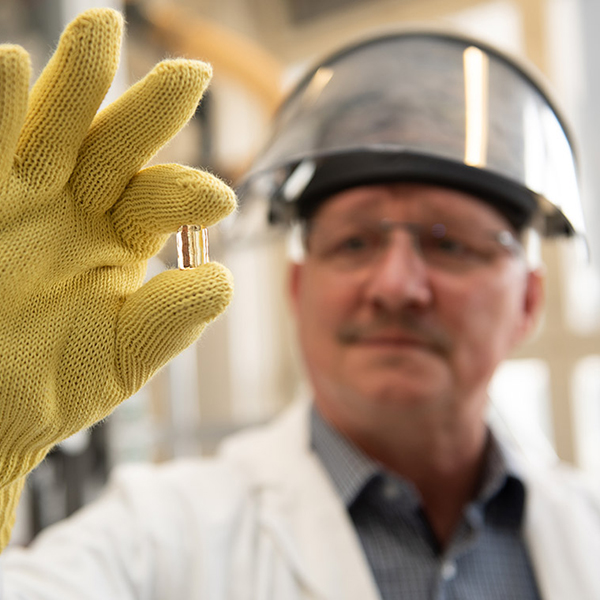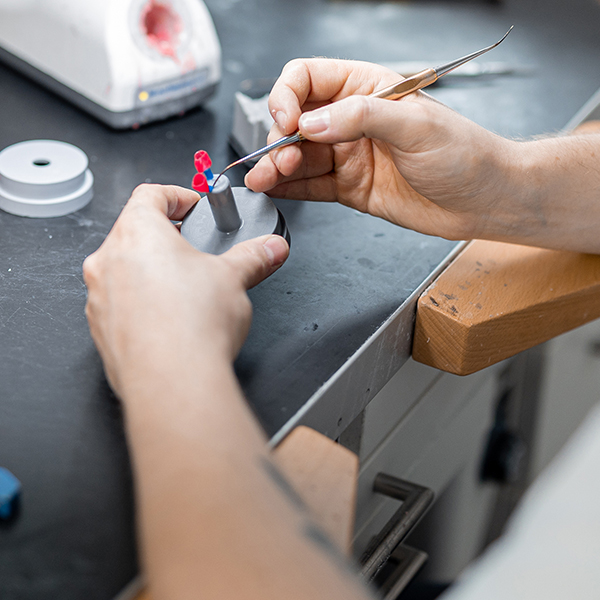Read about how a young dental technology trio has achieved a new level of quality using the press ceramic VITA AMBRIA
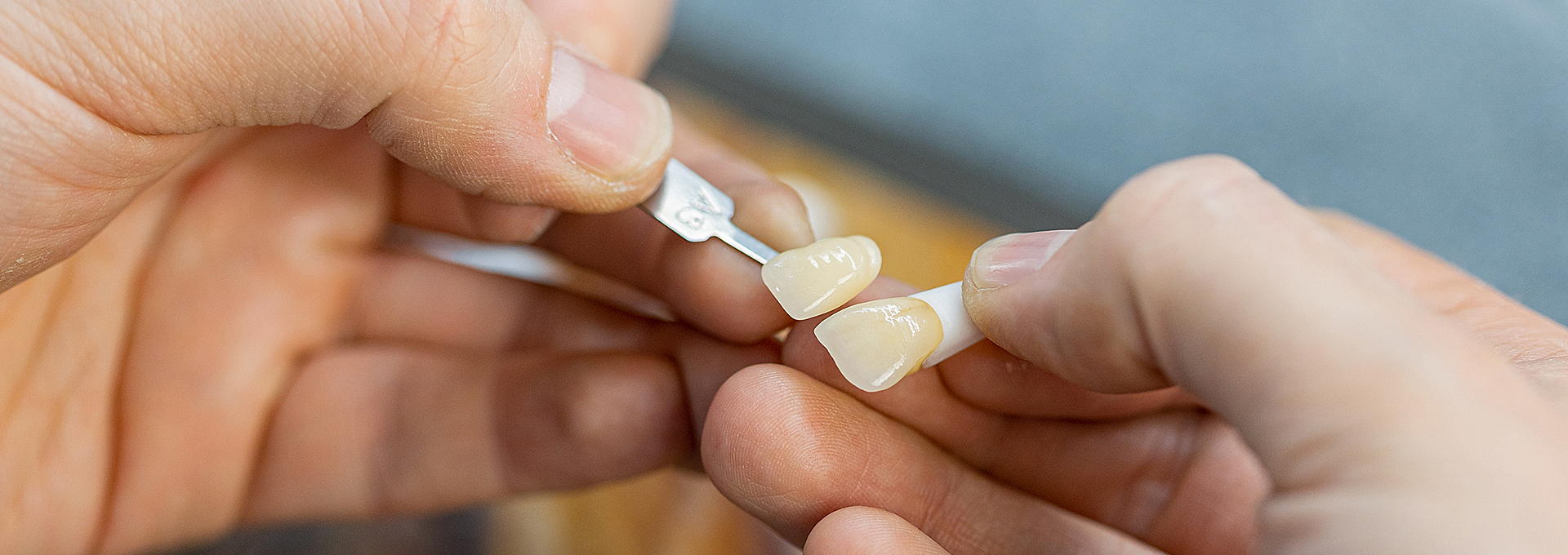
True-to-color chameleon effect
straight from the pellet
Pursuing high standards and innovation on a press ceramic discovery tour
The longer people work in their profession, the more they are likely to accept some things as status quo. Over time, people simply develop techniques to compensate for material or process-related shortcomings based on their experience and craftsmanship. The scenario is completely different with young rebels. They can be more open-minded, are curious to explore new directions and are not as prepared to settle for what seems to be the only alternative. They try to see if it can be done better, faster and more beautifully. That is exactly what happened at Zahntechnik Wichnalek – HIGHFIELD.DESIGN laboratory (Augsburg, Germany), where Lukas Wichnalek, Arbnor Saraci and Patricia Strimb were unwilling to settle for their previous press ceramic results and were looking for a workflow that would meet their needs.
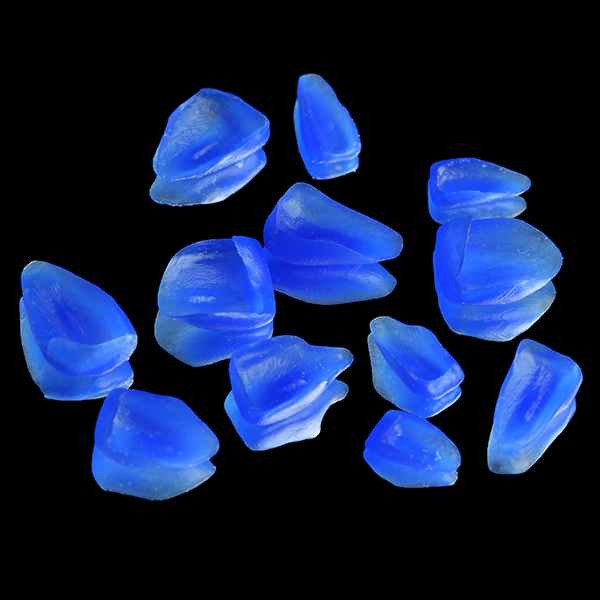
Veneers milled from wax with CAD/CAM support before spruing.
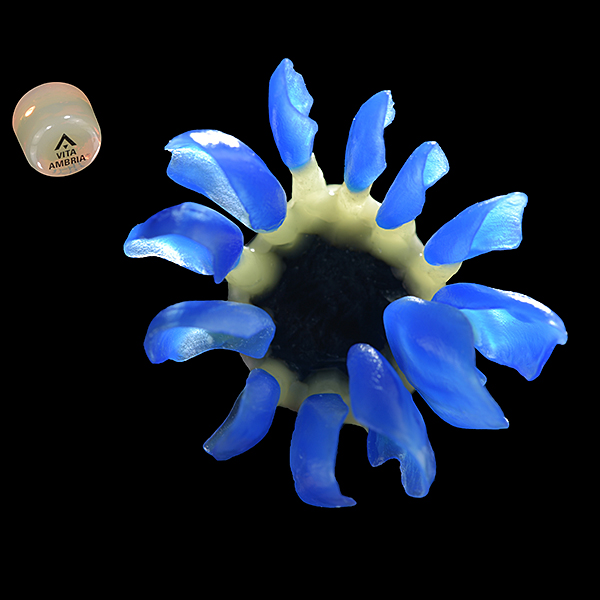
The circular sprued wax veneers shortly before investing.
Youthful momentum to achieve all-ceramic perfection
At HIGHFIELD.DESIGN at Hochfeldstraße 62 in Augsburg, every day is about achieving the perfect restorations. Founded in 1994 by Norbert Wichnalek, the laboratory unites years of work experience with the energy and creative drive of its young employees. The common goal is working together closely to produce restorations that are tailored to individuals. That is why it is important to keep pace with the latest technological and material developments and to constantly think outside the box to stay one step ahead.
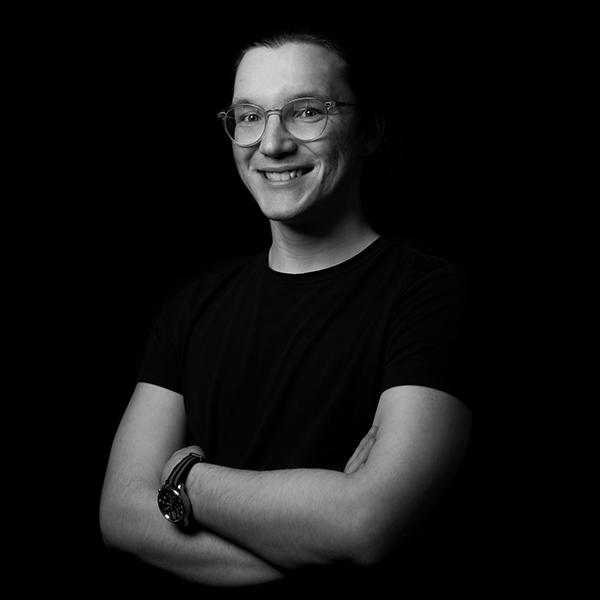
Lukas Wichnalek
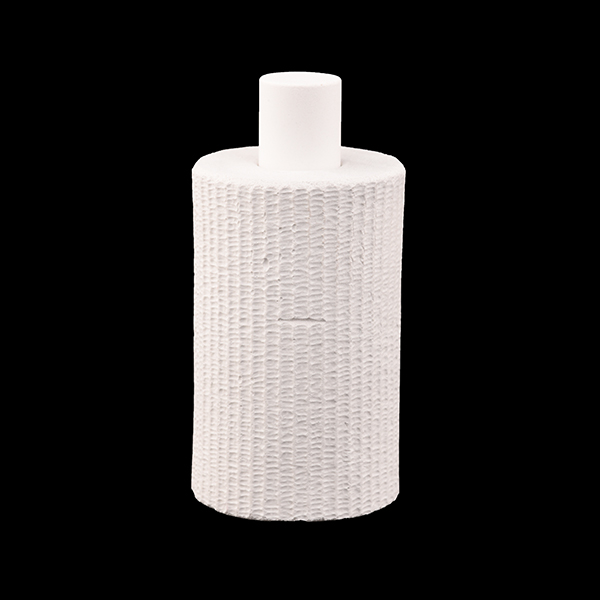
The wax veneers were fired out of VITA AMBRIA INVEST and pressed with the VITA AMBRIA PLUNGER.
Of course, ceramics have also been pressed at the laboratory since it was founded. And at one point, it was exactly this established manufacturing process that was called into question by the three young employees. "Specifically, we noticed that a lot of pressed ceramic often looked too lifeless and the shade often deviated from the VITA shade standard. But we wanted to get the pellet in the right shade so we could also achieve the right shade effect for the patient later on with as little effort as possible," explained Arbnor Saraci, describing what he was unwilling to accept, while also expressing the desire for natural fluorescence, opalescence and translucency. The third member of the group was particularly displeased by the pronounced reaction layer with the investment material.
Press ceramic systems put to the test
Ever since these press ceramic requirements were defined by the young trio, they had been searching for an ideal solution. The objective was always to get the best out of a new material. In other words, calibrating the equipment was crucial in seeing what a pressed ceramic could really do. The three team members were tireless in finding the perfect preheating and pressing temperature. "If the temperature is too low, the cavity does not drain properly. If the work is done with too high of a temperature, an excessively pronounced reaction layer forms with the investment material," Patricia Strimb points out, based on numerous test runs.
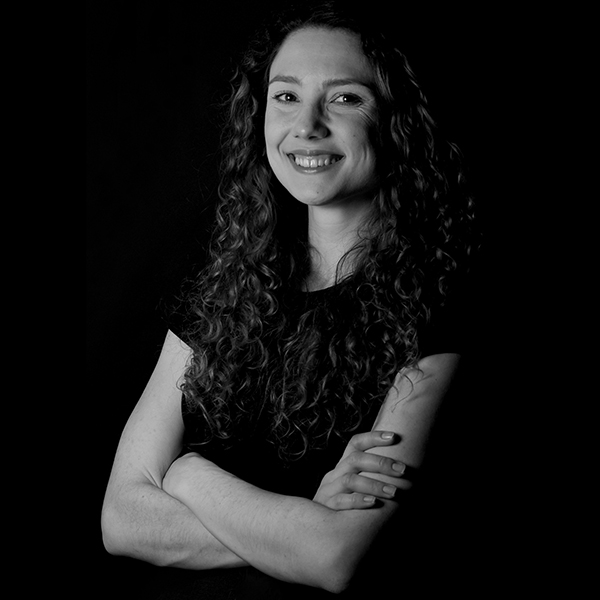
Patricia Strimb
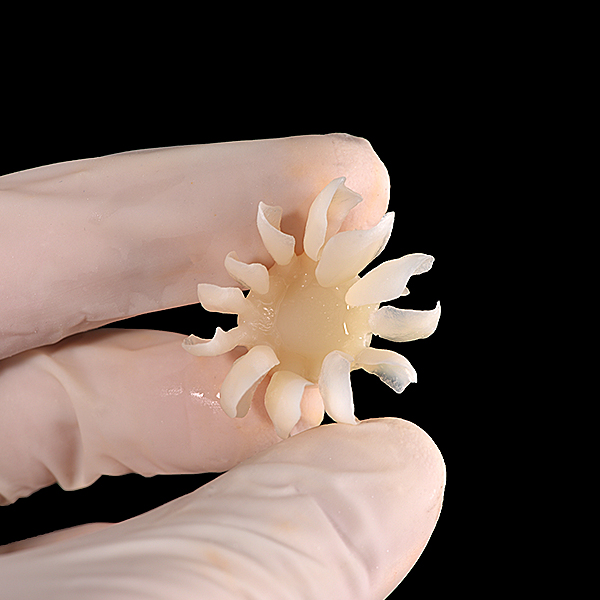
The press results made of VITA AMBRIA directly after fine investment with a water jet.
VITA AMBRIA in the press ceramic endurance test
Once VITA AMBRIA found its way to Hochfeldstrasse 62, no effort was spared to test the zirconia-reinforced lithium disilicate. Because the very best really does come from every blank. Even with pressed single-tooth restorations, nothing is wasted. An repurposing alternative is always considered. For example, duplicated extracted teeth are injected into wax and pressed into ceramic in order to practice the finishing process and ensure efficiency. However, other challenging shapes also find their way into the muffle as wax duplicates so that the precision and dimensional accuracy can be checked after investment and pressing. That was also the case with the new VITA AMBRIA pressed ceramic, which was transformed into the figure of a bat with a small body and wide, wafer-thin wings.

Arbnor Saraci
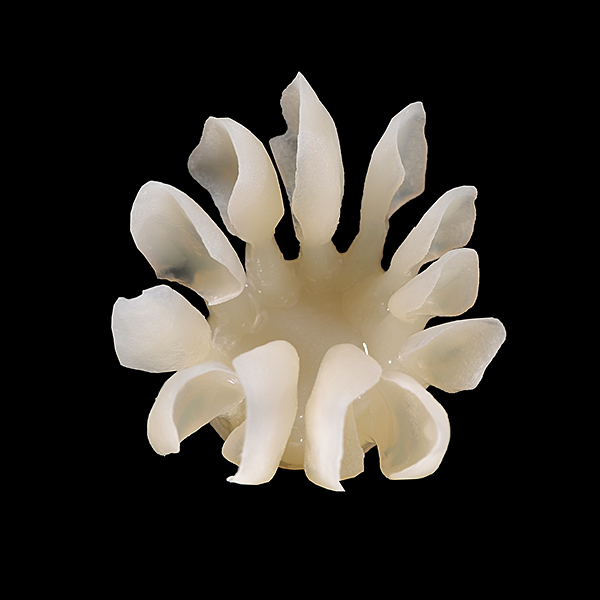
Dimensionally accurate, precisely finished and smooth ceramic restorations.
Pressed bats, nuts and bolts
The challenging bat morphology was quickly duplicated in wax, embedded and pressed with the VITA AMBRIA material system. The result showed precisely leveled off wing areas without any reaction layer. Under different lighting conditions, the zirconia-reinforced lithium disilicate with its vibrant optical light properties revealed its full esthetic potential, recalled Patricia Strimb: "The light effects in the wings had something magical about them, thanks to the natural fluorescence, opalescence and translucency." In terms of precision, however, the three were not yet at the end of their endurance test. "We then wanted to know more about the precision. That's why we duplicated an entire screw system and embedded it with a vacuum bell jar. We weren't disappointed here either," said Lukas Wichnalek. The threads of the screws and nuts were so precise and smooth after divestment that the components could be screwed together smoothly. There was nothing more the trio could have expected.
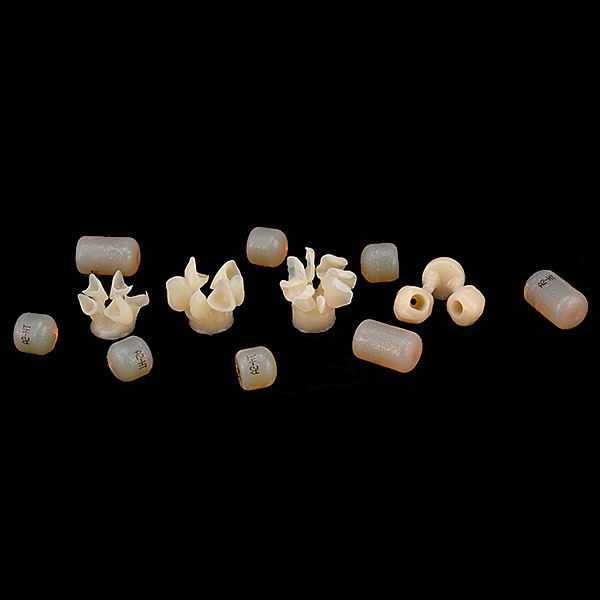
Different single-tooth restorations made of the VITA AMBRIA press ceramic.
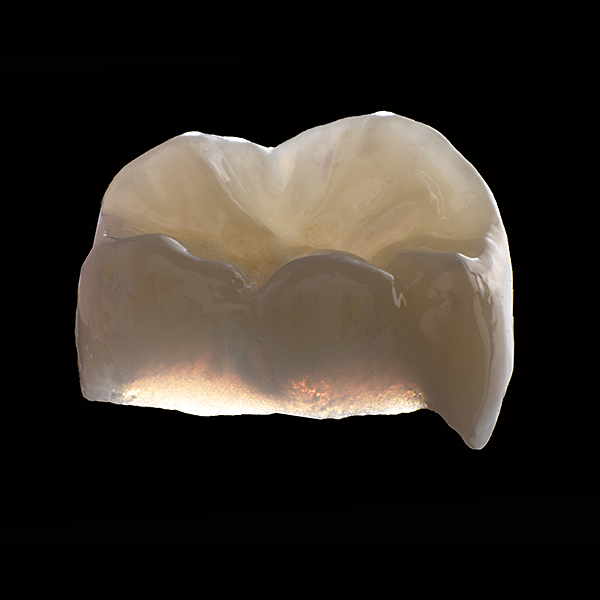
Natural opalescence, translucency and fluorescence are integrated into the VITA AMBRIA press ceramic.
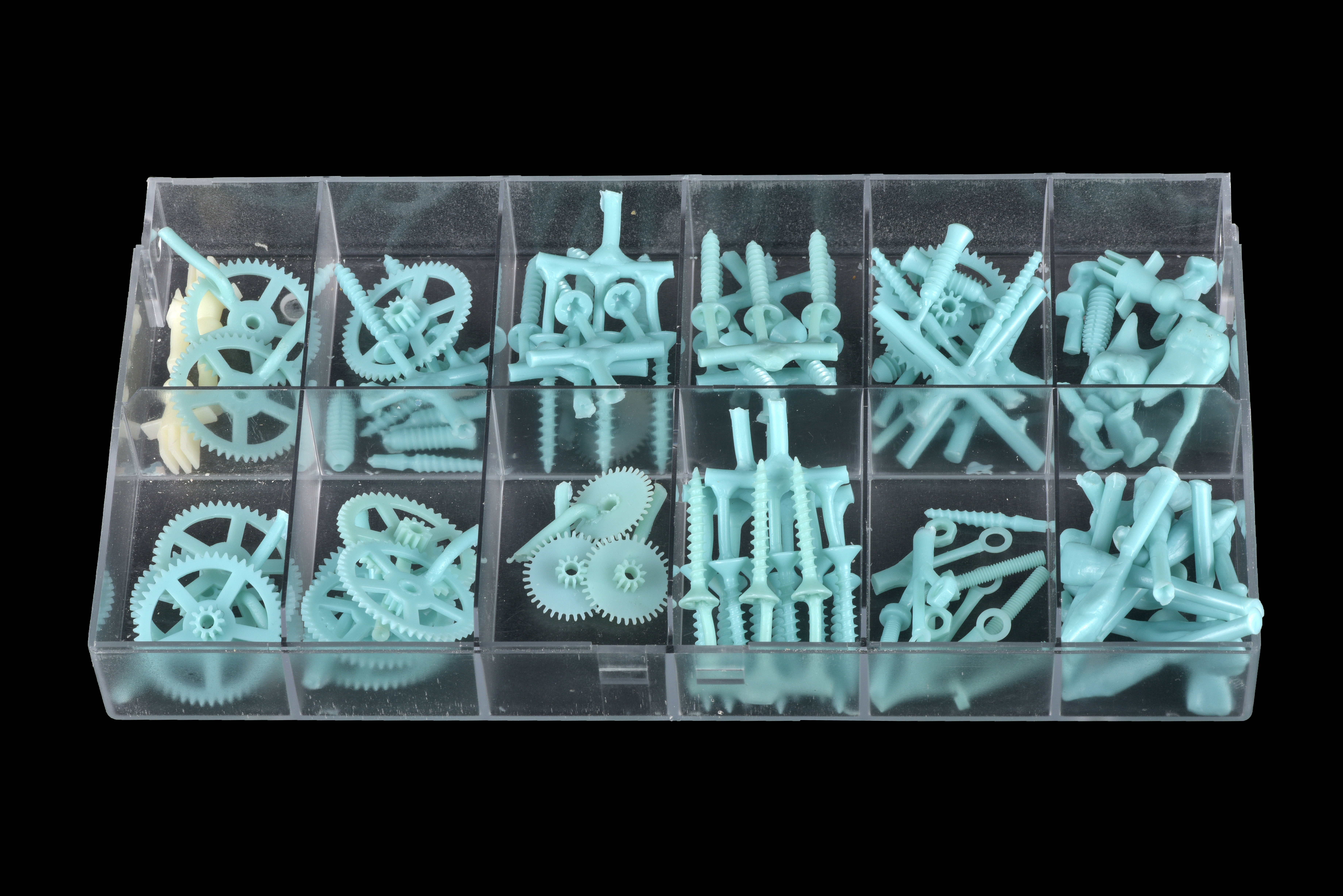
A wide selection of duplicated wax moulds are often embedded.
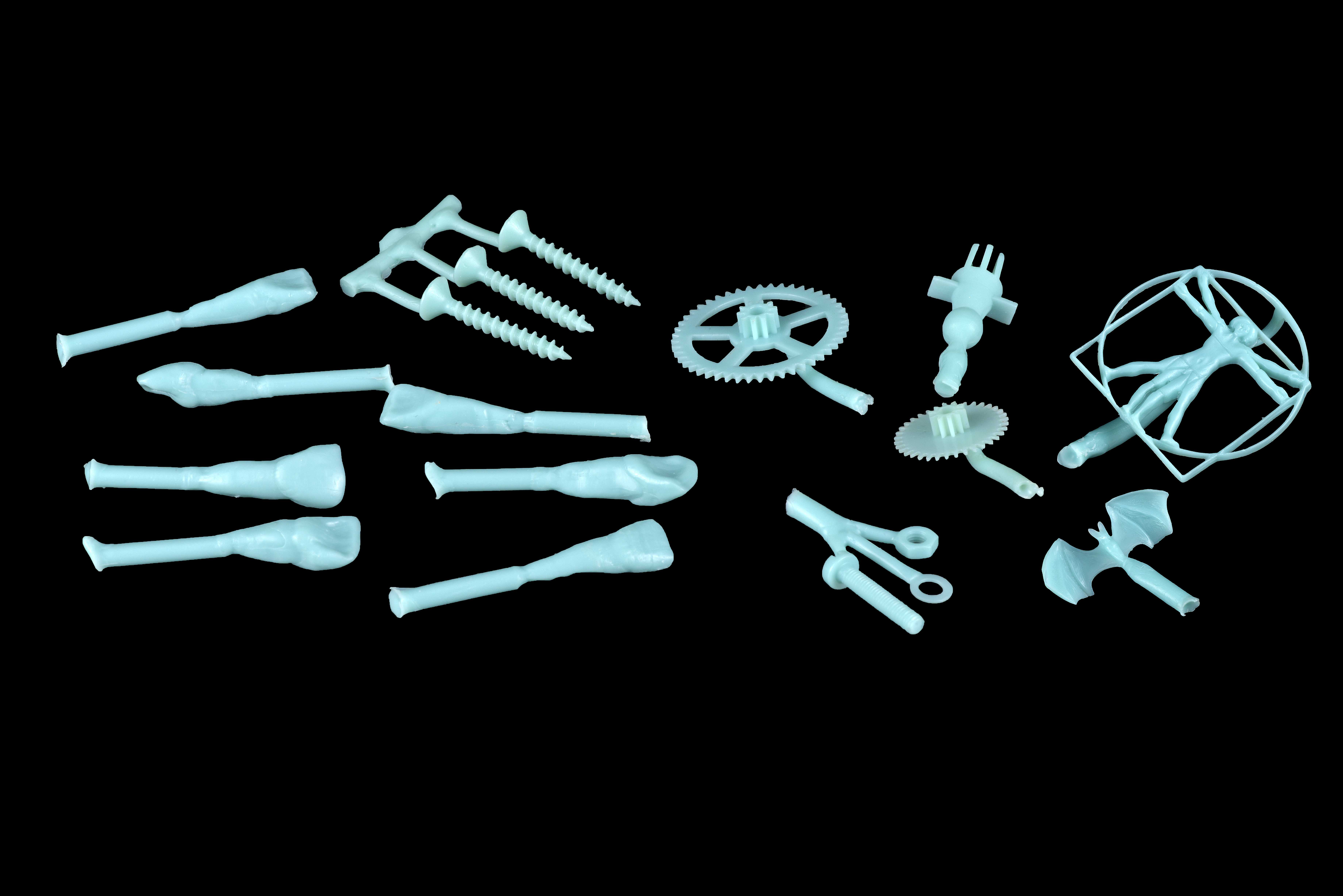
Duplicated actual teeth, screws, nuts and gear wheels in wax were used to check the pressing results.
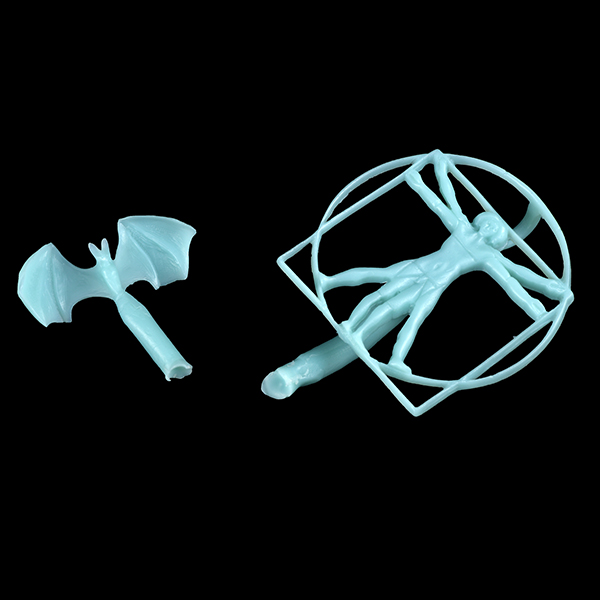
Delicate shapes such as a bat or the Vitruvian Man by Leonardo Da Vinchi were also pressed.
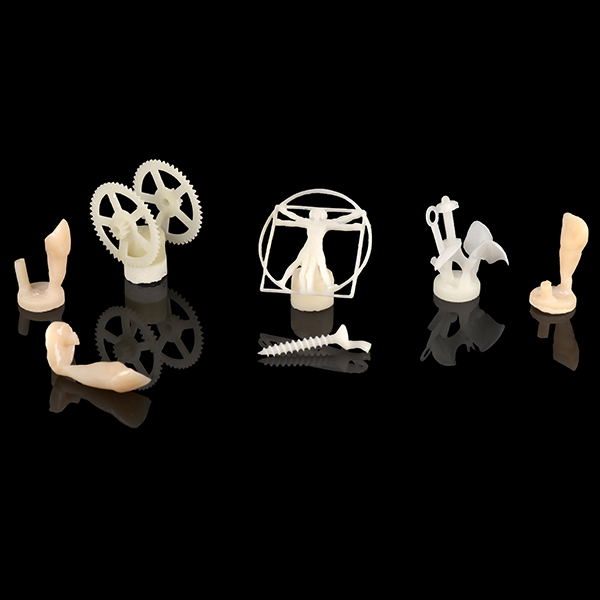
The press results were used to repeatedly check the precision and dimensional accuracy.
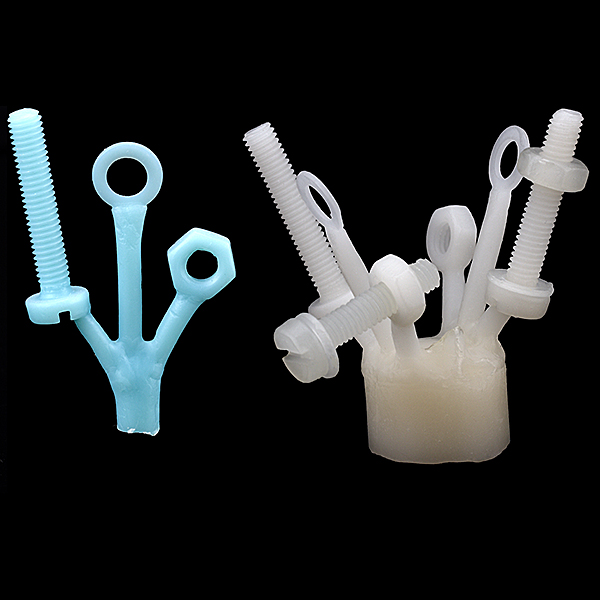
Even nuts and screws could be pressed with absolute precision and showed full functionality using VITA AMBRIA.
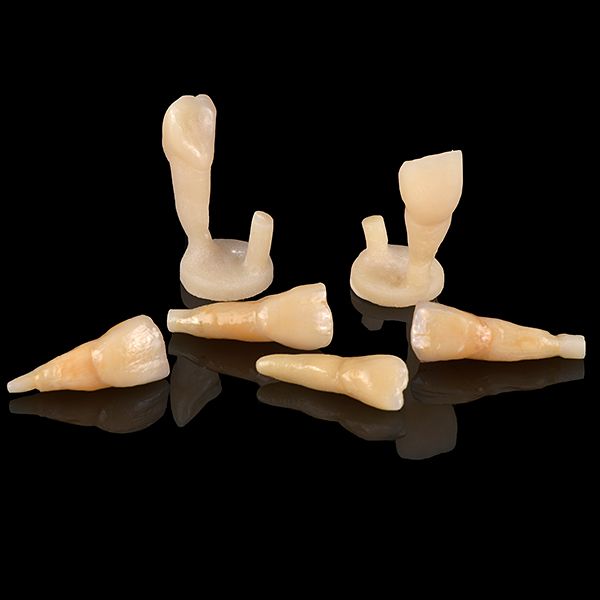
Pressed real teeth ensure efficiency, as training is carried out on these teeth.
Press ceramic shade accuracy at the core of VITA DNA
In the first patient cases, another advantage quickly became clear: "With VITA, the shade is part of the DNA. It's a given that VITA AMBRIA will have the right shade. So we already buy the right shade with the blanks," added Lukas Wichnalek, describing how much easier it is to work with VITA AMBRIA, since the esthetic base is already in the pellet. Arbnor Saraci noticed another valuable detail while working on a patient with very different core shades: "The pronounced chameleon effect of VITA AMBRIA, in combination with the shade accuracy, makes it easier for us to achieve a balanced shade effect, even with different layer thicknesses of the adjacent restorations." In the end, the trio agreed that they had found the right press ceramic in VITA AMBRIA.
Four reasons for choosing VITA AMBRIA press ceramics
- Distinctive chameleon effect with natural translucency, opalescence and fluorescence
- The right shade in every pellet, thanks to the shade accuracy to the VITA shade standard
- Dimensionally accurate and detailed pressing results
- Fast finishing process, as there is hardly any reaction layer

